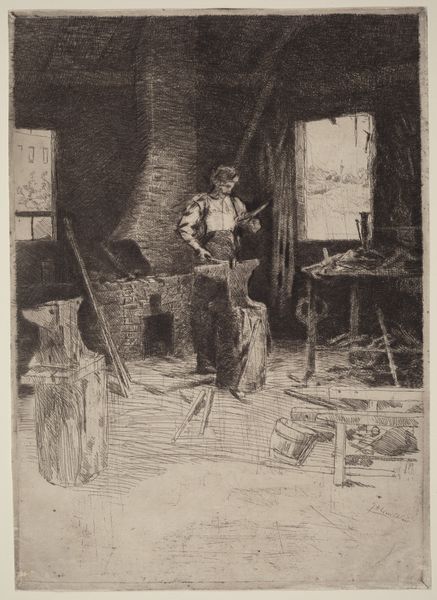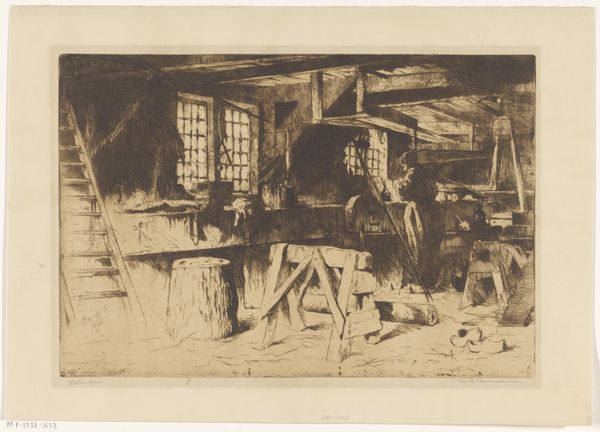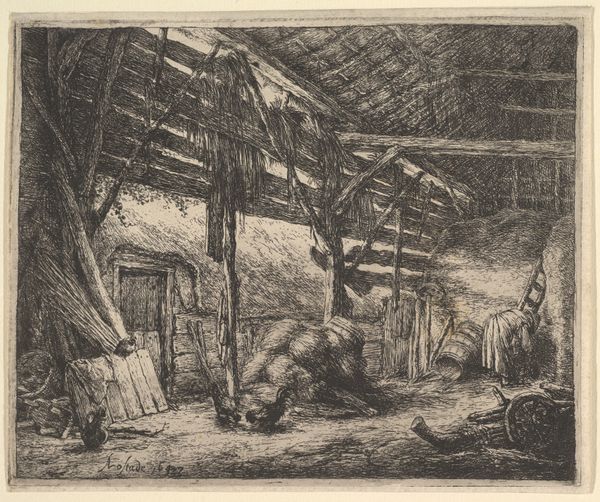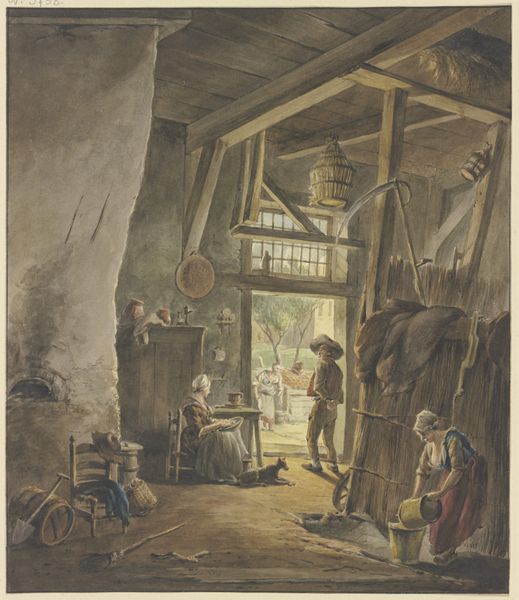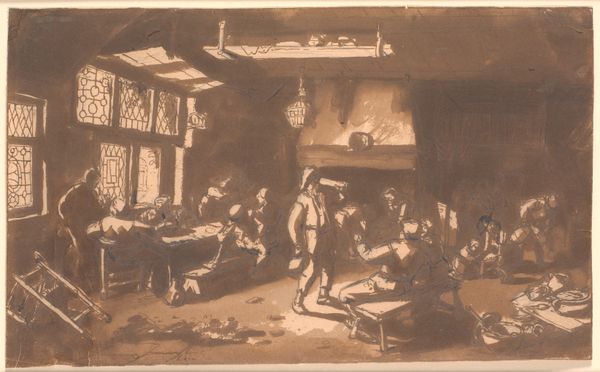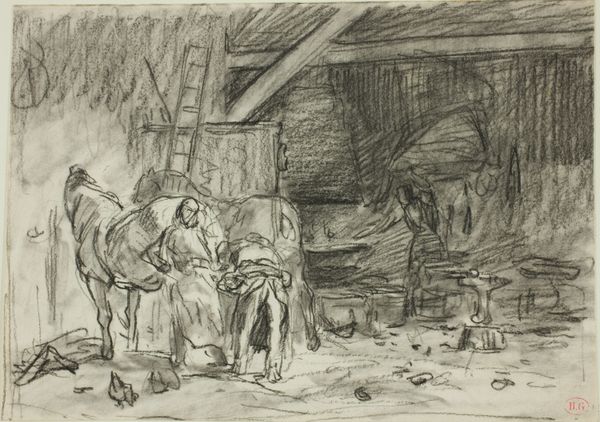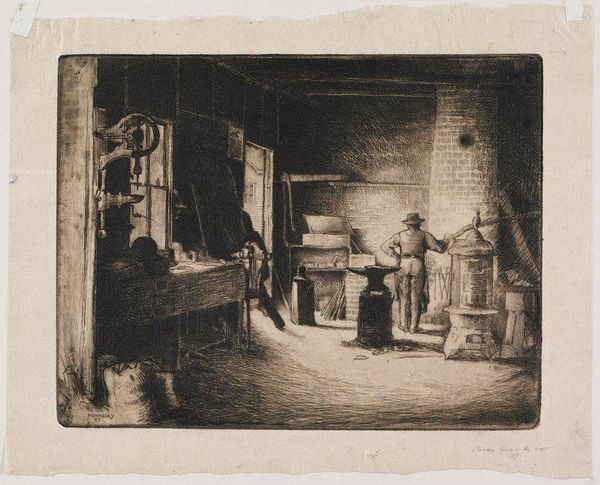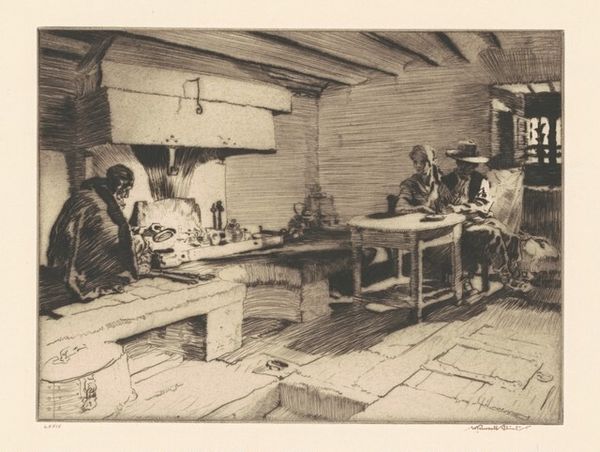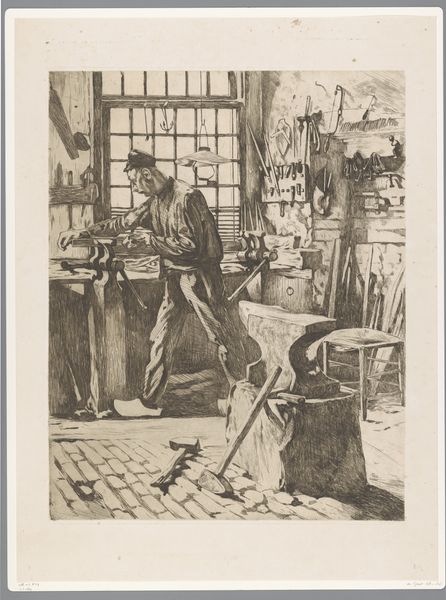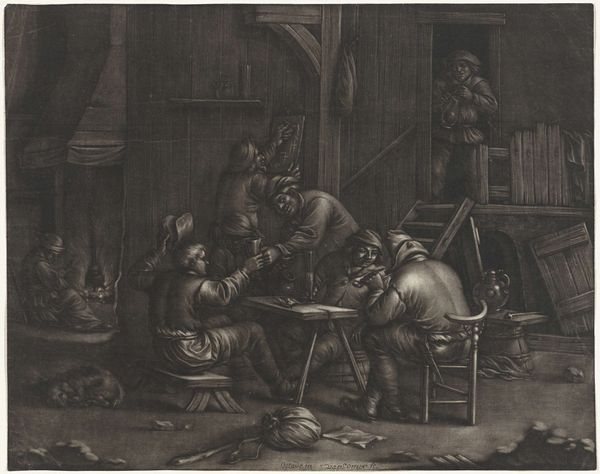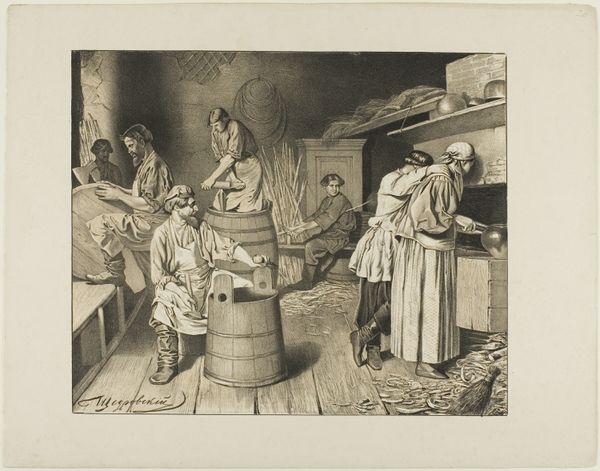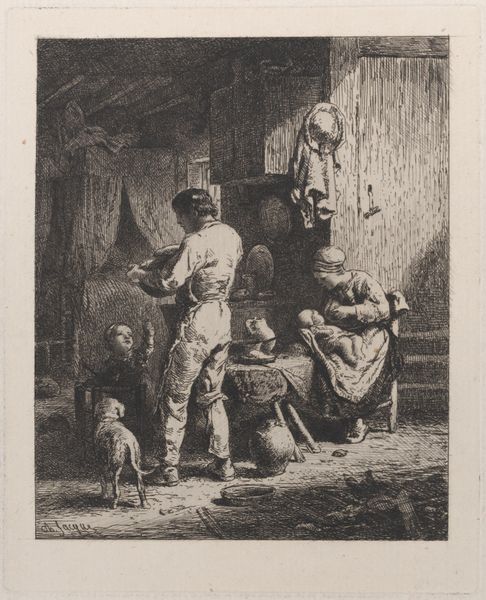
drawing, charcoal
#
drawing
#
16_19th-century
#
charcoal drawing
#
charcoal art
#
pencil drawing
#
france
#
genre-painting
#
charcoal
#
realism
Dimensions: 15 1/4 × 11 1/8 in. (38.7 × 28.3 cm)
Copyright: Public Domain
Editor: This is “The Weaver,” a charcoal drawing from 1887 by Léon Augustin Lhermitte. It has this sort of quiet, almost solemn atmosphere. The detail in the loom is amazing. What do you see in this piece, in terms of its wider cultural implications? Curator: I see a commentary on labor and social class in late 19th-century France. Lhermitte often depicted rural life, but not in an idealized, pastoral way. This is a Realist portrayal of work, but through the activist lens, we must ask: what’s missing? Who does this not represent? Editor: That’s interesting. It feels pretty observational at first glance. The artist focuses on capturing the figures. I guess the intense labor isn't explicit? Curator: Exactly. It’s less about the action and more about the people within this context, yes. But where are the broader sociopolitical critiques, like the impact of industrialization or the exploitation of rural workers? Does this representation serve to simply aestheticize their labor, rather than instigate meaningful change? It almost romanticizes the Weaver when viewed through this lens. Editor: So, you're saying the image raises questions about its own role in social commentary, or lack thereof? Curator: Precisely. We must consider what this image *does* versus what it *intends*. For a piece focused on labor, we have to interrogate if the artist merely documented the labor, or was trying to ignite social change by bringing visibility to the working class and systemic inequalities within 19th Century French society. Editor: That adds so much more depth. It’s not just a depiction of a weaver; it’s a statement – or perhaps a missed opportunity for one. Curator: Or potentially one not fully realized. Exactly! We are considering the gaze, power and those depicted within. Editor: I’ll definitely be looking at art with those questions in mind now! Thanks!
Comments
minneapolisinstituteofart almost 2 years ago
⋮
Léon-Augustin Lhermitte made this drawing at a time when cottage industries such as weaving faced intense competition from mechanized factories. It was a serious social concern across northern Europe, one Lhermitte helped to humanize with his art. He ennobled these workers by portraying the space as orderly and the couple as absorbed in the day’s work, seeming to confer about the fiber that will be spun and woven into cloth. The product of their labors slowly accumulates on the big roller near the man’s feet. The pair are presented less as individuals than as generalized types, emblematic of all traditional artisans threatened by industrialization.
Join the conversation
Join millions of artists and users on Artera today and experience the ultimate creative platform.
